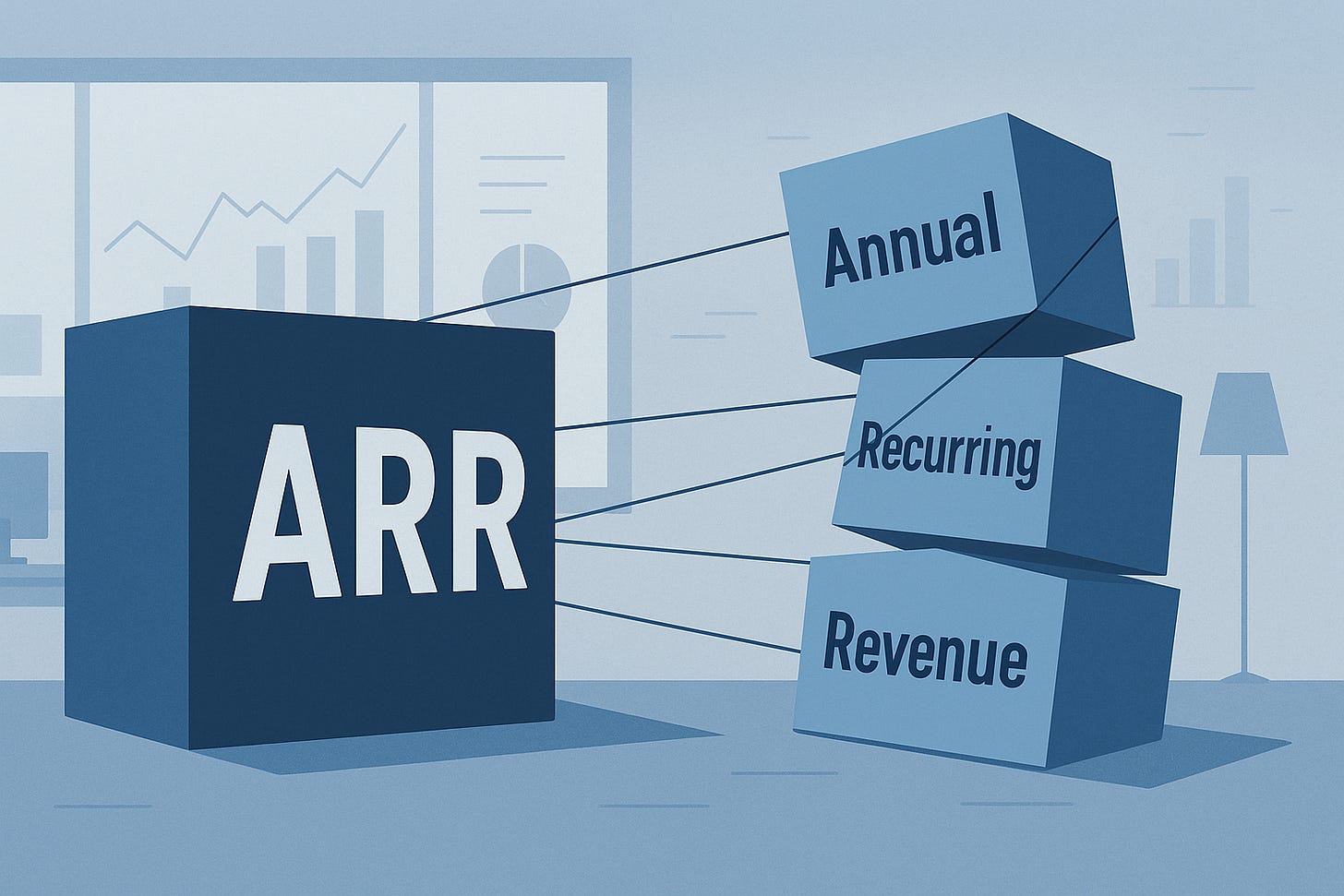When ARR is not ARR
How ARR today is sometimes neither annual, nor recurring, nor revenue
I’m Tanay Jaipuria, a partner at Wing and this is a weekly newsletter about the business of the technology industry. To receive Tanay’s Newsletter in your inbox, subscribe here for free:
Hi friends,
Voltaire once wrote “This agglomeration which was called and which still calls itself the Holy Roman Empire was neither holy, nor Roman, nor an empire”
A similar confusion has crept into one of SaaS’s favorite metrics. ARR, short for annual recurring revenue, used to have a simple meaning: the predictable subscription revenue a company generates.
But lately, what some startups call ARR is neither annual, nor recurring, nor in some cases, even revenue. Let’s look at what’s going on.
1) When ARR is not annual
What’s going on
Many companies take monthly or cancel-anytime contracts (or cancel within 3 months with most customers in that period) and multiply the current month’s revenue by twelve to arrive at an ARR number, arguing that if customers keep paying next month, that’s what they’d earn in a year. The issue is that these customers haven’t committed to a year, so the figure represents potential, not commitment. We all know many of the budgets in AI today are experimental.
The other version of it is using peak spikes in a customers demand that likely won’t recur month to month and using that to annualize.
Why it matters
Annual implies time-bound commitment and predictability. When most of your base can churn in a month, the number behaves like annualized MRR, not true ARR.
2) When ARR is not recurring
What’s going on
One common stretch is project type revenue being bundled into ARR, which is especially true for service type models which have grown in the AI world that are often transactional/project-based. In some cases, those customers come back for multiple projects so it can feel recurring, but these are still discrete projects that must be re-won each time.
One of the other trickier ones is with the rise of usage-based models, whether to annualize the usage. The logic is that consumption repeats, so it must be recurring, which it may be, but in some cases there are clear spikes for certain reasons such as the first time to onboard, etc and the usage is likely to not recur in the future.
Finally, some companies are baking pilot revenue into ARR by including the revenue from the pilots themselves or sometimes the assumed size of the contract when it is signed (gulp).
Why it matters
Recurring means repeatable by contract or strong customer habit. When project work or speculative expansion is blended into ARR, it makes the metric lose meaning. Distinguishing recurring from repeatable or re-occuring helps shed better light on the business.
3) When ARR is not Revenue
What’s going on
Perhaps the most creative accounting happens here. Some companies are treating gross merchandise volume (GMV) as revenue, even though the company only earns a small take rate.
Others are annualizing pilot conversions, counting the potential revenue “if all goes well” as if it already exists, and in some rare cases, companies are including potential expansion figures which haven’t happened yet into ARR (again, gulp!).
Why it matters
Revenue represents money that has actually been earned by the company and is supported by delivery or performance. Counting unearned expansions or total GMV overstates reality, since those dollars may never materialize or do not belong to the company in the first place.
Closing thoughts
The pressure to show eye-popping growth is real. Screenshots of “$0 to $5M ARR in X months” and soundbites of “We only invest in $0 to $2M ARR in 10 days” travel fast, and it’s tempting to keep up.
If your business relies on short-term contracts, usage, or pilots, that’s fine. Many companies in the AI world are the same. Just label it honestly as annualized run-rate revenue or annualized MRR and remember that it is one of the aspects of the business to focus on and improve over time. Revenue quality ultimately decides who endures. Retention and gross margin matter more than vanity milestones.



Hilarious, isn’t it? We’re officially in the comedy era of software!
Loved the comparison to Holy Roman Empire :).